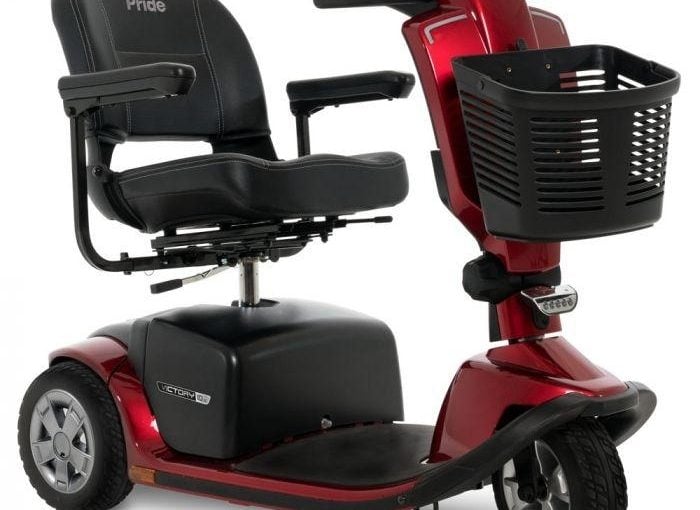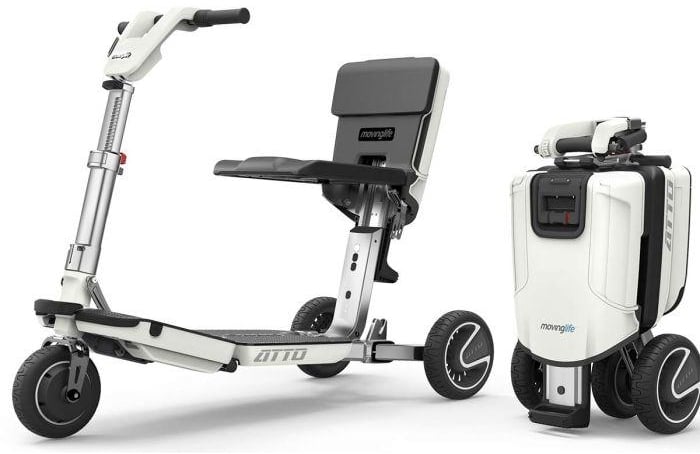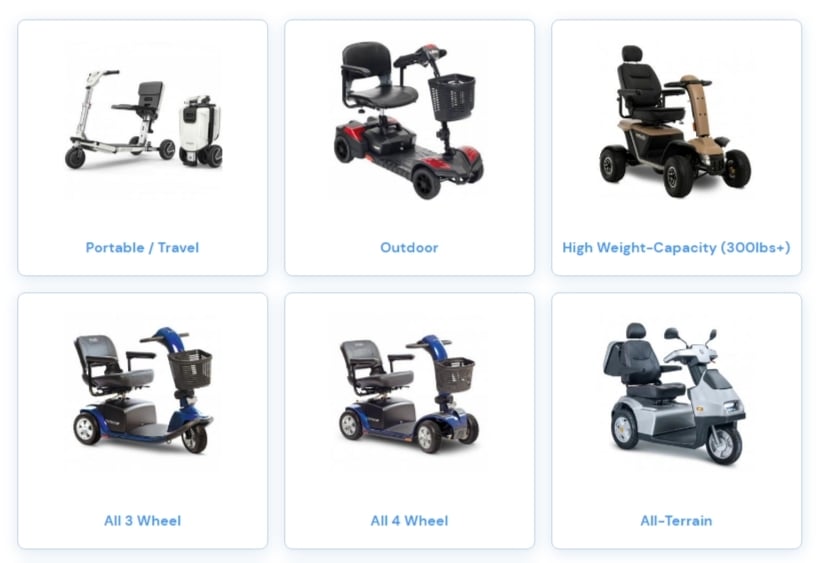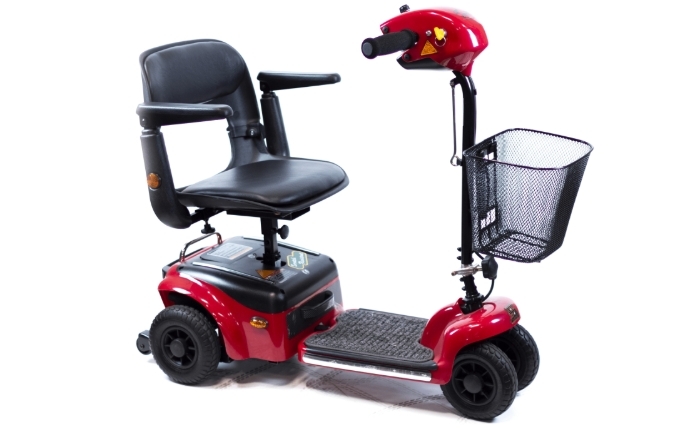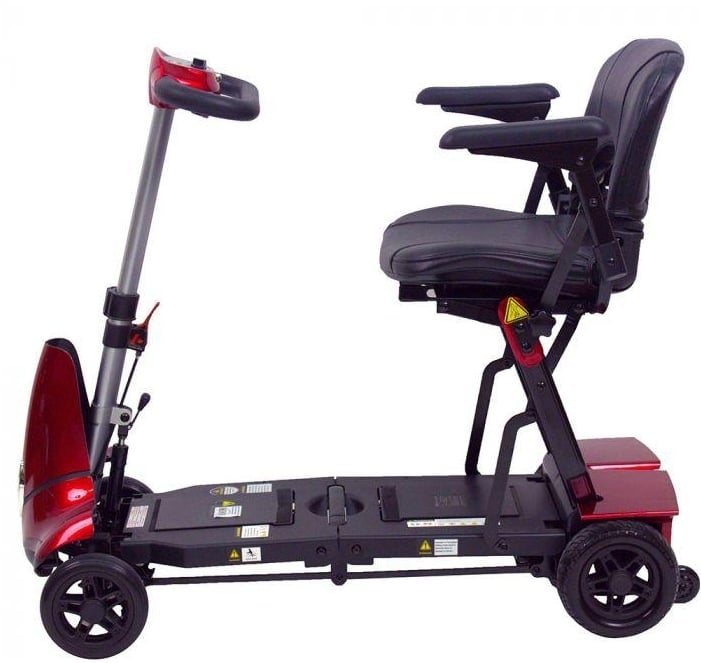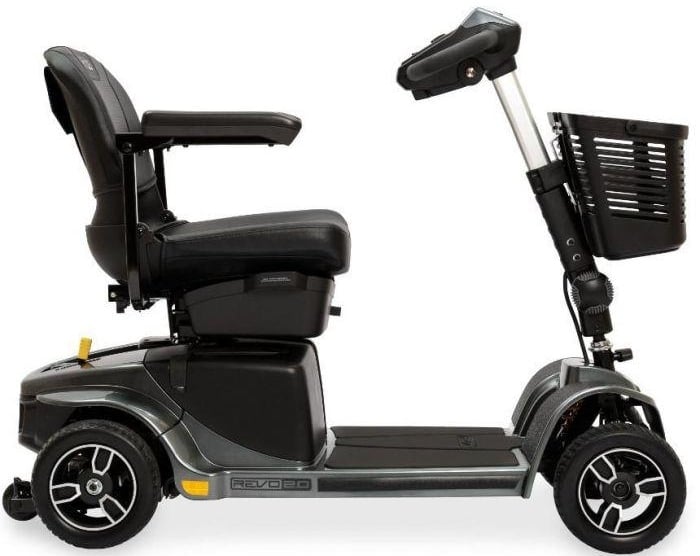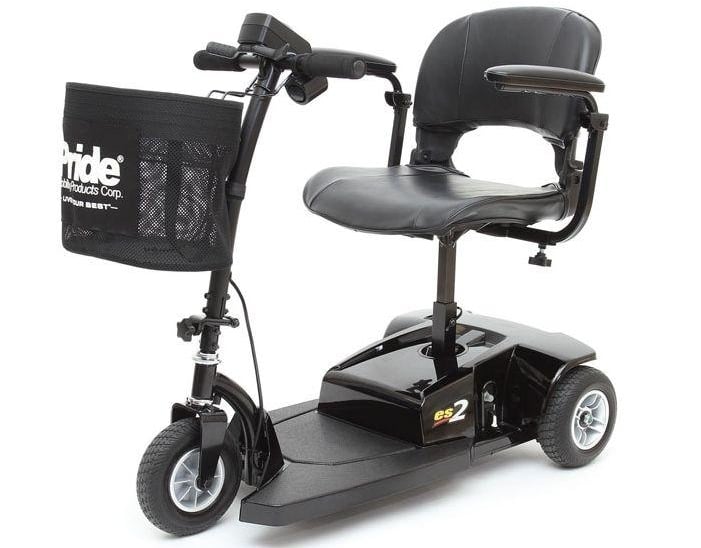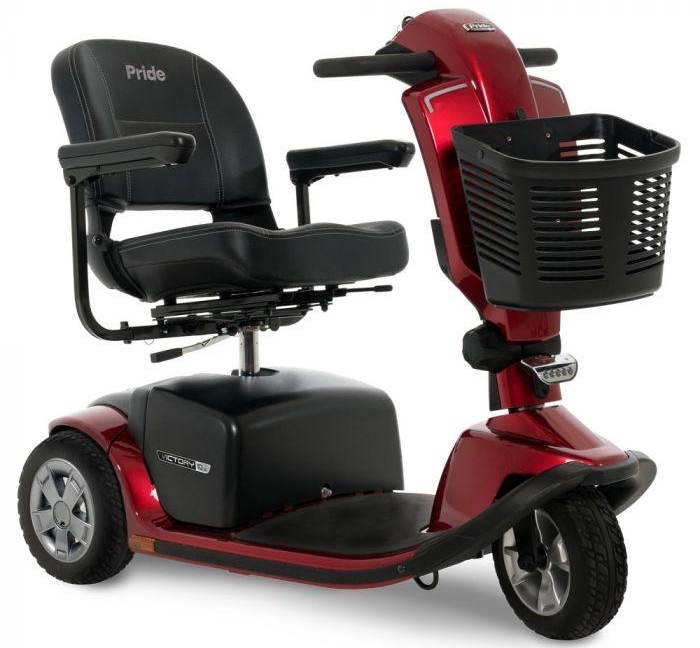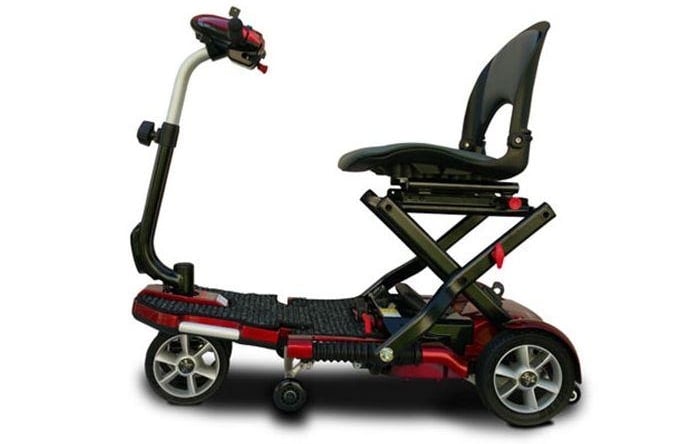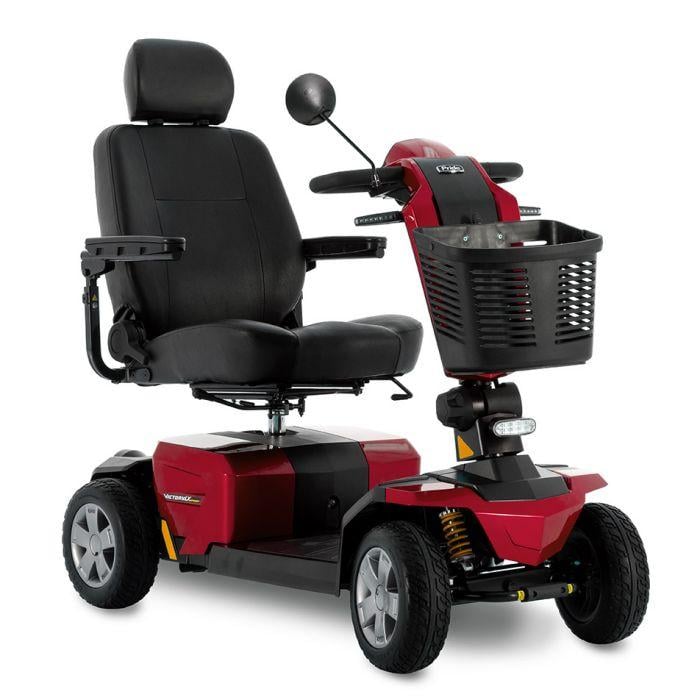Key Takeaway
- Mobility scooters are divided into three classes: Class 1, Class 2, and Class 3.
- The narrow width of Shoprider Scootie makes it the best indoor mobility scooter.
- The compact-saving design of Solax Mobie Plus makes it the most portable scooter.
- The terrain-friendly design of the Tzora Titan 4 Scooter allows for recreational activities.
- Pride Revo 2.0 4-Wheel Scooter is ideal for a smooth and pleasant outdoor ride.
- This wheelchair-accessible Pride Go-Go ES2 3-Wheel Scooter is the best 3-wheel.
- Pride Victory 10.2 3-Wheel Scooter is the best heavy-duty mobility scooter on the market.
- EV Rider Transport Plus Foldable Scooter is a complete package for a 4-wheel user.
We’re living in the modern age, where independence and the ability to travel are key elements in every individual’s life. However, there are instances when both become restricted due to factors beyond control, such as a handicap, health condition, an accident, or the passage of time. Fortunately, those who have lost part of their mobility may regain some of their freedom and experience an overall improvement with the help of a one-of-a-kind invention: mobility scooters.
What Are Mobility Scooters?
A mobility scooter is a two-wheeled vehicle propelled by an electric motor and developed for use by individuals with mobility limitations, most often the elderly and disabled. It is primarily intended to serve as an adjunct to a power wheelchair but is built in the style of a motorscooter. When motorized, these scooters are often referred to as mobility scooters, electric scooters, or power-operated vehicles.
Mobility Scooters vs. Power Wheelchair
Mobility scooters are distinct from power wheelchairs in that they are often less expensive, can be maneuvered over rough terrain with greater ease, and are customizable. Individuals who have difficulties walking or moving about but do not need the assistance of a motorized wheelchair may use one of these scooters. In addition, those who need a powerchair for intermediate distances or lengthy standing but cannot drive for medical reasons are also common users of these scooters.
Step-by-Step Guide to Buying Mobility Scooter
Now that you know how an electric scooter can be your ticket to mobility freedom, it’s time for the most critical part: buying a mobility scooter. With various mobility scooter brands in the market, the process may become overwhelming; however, with the right investment, you may travel freely, most importantly, safely, for years to come. Thus, take time to do your research to avoid frustration down the road. To help you out, below, we’ll uncover a step-by-step guide to buying a mobility scooter.
Types of Mobility Scooters
It is essential to keep in mind that mobility scooters come in a variety of sizes and types. They might vary from light-framed, smaller versions that are compact enough to put into the trunk of a vehicle to heavy-duty ones that can go great distances on a single charge and easily navigate slopes. At the end of the day, the choice lies solely in your hands.
- Portable Travel Scooters:This is an excellent alternative for individuals who are always on the go. The majority of models are small and relatively lightweight and fold up into a more manageable size for travel. Even though portable travel scooters are compact, convenient, and the choice with the lowest cost, they are not appropriate for daily usage.
- Three-Wheel Indoor Scooter: This particular model is ideal for usage either at home or in the workplace since it has a more compact turning radius and a more slender base. It is an excellent option for mobility in areas with a restricted amount of room. However, remember that the three-wheel scooter is not a good choice for traveling over rough terrain.
- Four-Wheel Indoor Scooter: Since there is sufficient space for both legs and seats, a four-wheel indoor mobility scooter is an excellent option for comfort. It has a decent top speed, and the battery life is adequate, too. However, due to its bigger size, it may not maneuver easily as a 3-wheel mobility scooter. It does, however, offer better stability, durability, and comfort.
- Four-Wheel Outdoor Scooter: The combination of powerful engines and tires built for off-road usage makes outdoor scooters an excellent option for use on non-paved terrain. This model has several desired features, including backlit screens and headlights. Individuals who want to spend much time outside on their scooters are encouraged to invest in them.
- Heavy Duty Mobility Scooter: This mobility scooter has a weight capacity of up to 550 pounds, making it suitable for individuals with a larger frame. This heavy-duty device has a more powerful engine, a broader base, and more extensive tires than its predecessor. It is excellent for riding on grass and can handle any other sort of terrain—you name it.
So, these were some of the common types of mobility scooters. Remember that all scooters, regardless of the size or type of the product, are designed to satisfy the requirements of the individuals for whom they were intended (disabled, those with impaired mobility, etc.). They are incredibly easy to manage, which makes them perfect for driving outside. In addition, since the scooters have such appealing aesthetics, the impossibility or impairment that the rider may have will be less obvious.
Maneuverability and Performance
The ability to navigate one’s surroundings quickly and flexibly is of the highest significance. When searching for a mobility scooter, keep in mind the following characteristics: tire type (solid, foam, or air-filled), assembled weight, turning radius, ground clearance (the space between the base of the tire and the undercarriage), maximum recommended incline, weight capacity, maximum speed (4 mph to 5.5 mph), operating range, and battery charge time.
Mobility Scooter Classes
Mobility scooters are basically an improved version of wheelchairs supported by a charging battery system. The following are some classes (categories) of mobility scooters you should know.
Class 1 Mobility Scooter: Mobility scooters that fall under Class 1 are those that are operated manually and include wheelchairs that do not have any electric motor attached to them. When you think of one of these, your mind might immediately go to the image of a mobility scooter, but in most cases, its dimensions and form are more similar to those of a conventional wheelchair.
Class 2 Mobility Scooter: Class 2 mobility scooters are permitted to be driven on sidewalks; however, their maximum combined speed must not exceed 4 miles per hour (mph). When crossing the street with a Class 2 scooter, you can utilize pedestrian and zebra crossings, but you cannot drive on the road itself, except for circumstances where there is no pavement.
Class 3 Mobility Scooter: As long as riders obey all traffic laws, Class 3 mobility scooters are permitted to be used on public roadways and do not violate any road laws in the process. However, for a scooter to be placed into the appropriate Class 3, it has to be equipped with working headlights, taillights, turn signals, a horn, a rearview mirror, and emergency hand brakes.
Class 2 scooter is the best for making quick trips across town, having the flexibility to transfer the scooter to a vehicle, or using public transportation. However, if you want something more spacious and the option of driving on public roads, a Class 3 scooter is your best bet. For more information, visit the US government website for mobility scooter legal requirements.
Before You Start Looking, Ask Yourself;
Purchasing a mobility scooter is a significant financial investment; therefore, you must do some research to determine which brand and model would best meet your requirements. Since there is a great deal of variation in the market, it may be challenging to determine which features are available that you might potentially profit from. To begin, ask yourself the following questions.
- Where do you want to use your mobility scooter?
- What are your plans for storing and transporting it?
- Will you be navigating high steep hills or curbs?
- How much do you anticipate spending overall?
- Do you have any restrictions at home or workplace?
- How important is the seat comfort of the scooter for you?
- What weight capacity are you looking for?
Best Mobility Scooters to Buy
When it comes to mobility, scooters play a major role in supporting individuals with disabilities in moving about safely and conveniently from one place to another. Now that you’re familiar with essential features and things to consider when buying mobility scooters online, it’s time for action. However, with an extensive selection of products for individuals of all ages and needs, 1800Wheelchairs will always be the #1 place to spot your favorite wheelchairs. Here’s an overview:
- Shoprider Scootie(Best Indoor Mobility Scooter)
- Solax Mobie Plus(Best Portable Mobility Scooter)
- Tzora Titan 4 Scooter(Best Recreational Mobility Scooter)
- Pride Revo 2.0 4-Wheel Scooter(Best Outdoor Mobility Scooter)
- Pride Go-Go ES2 3-Wheel Scooter(Best 3-Wheel Mobility Scooter)
- Pride Victory 10.2 3-Wheel Scooter(Best Heavy Duty Mobility Scooter)
- EV Rider Transport Plus Foldable Scooter(Best 4-Wheel Mobility Scooter)
Shoprider Scootie (Best Indoor Mobility Scooter)
The Shoprider Scootie is by far the best indoor mobility scooter you can buy. Easy-to-ride, lightweight, and articulating wheels are just some of the noticeable features of this mobility marvel. The scooter’s overall weight (including the batteries) is only 82 lbs., followed by a 17″ narrow width, making Shoprider Scootie ideal for maneuvering on the lawn, cruise ships, or simply indoors.
Solax Mobie Plus (Best Portable Mobility Scooter)
The Solax Mobie Plus has some exciting features which make it an incredible portable mobility scooter. This compact, space-saving device has an ergonomic steering wheel packed with a new tiller design, enabling you to unfold it even quicker and easier. The overall weight (including batteries) is only 54 lbs. In addition, it has a broader floorboard, providing enough space to carry stuff while on the road.
Tzora Titan 4 Scooter (Best Recreational Mobility Scooter)
The Tzora Titan 4 Scooter is a 4-wheel terrain scooter designed for outdoorsy individuals who love recreational activities. Because of the folding design of the Hummer-XL, it can be transported easily and used in any environment or terrain. The high-performance design with big tires, complete suspension, and memory foam seat has no trouble navigating even the hardest inclines and slopes.
Pride Revo 2.0 4-Wheel Scooter (Best Outdoor Mobility Scooter)
The Pride Revo 2.0 4-Wheel Scooter is a scooter that packs various useful functions into a single attractive package. The Revo 2.0 delivers the kind of tough reliability you would expect from a premium mid-size scooter since it is made to endure and is very durable. The Comfort-Trac Suspension makes for an outdoor ride that is both smooth and pleasant regardless of the terrain.
Pride Go-Go ES2 3-Wheel Scooter (Best 3-Wheel Mobility Scooter)
The Pride Go-Go ES2 3-Wheel Scooter is a wheelchair-accessible scooter with two different speed settings for the utmost adaptability. It comes in small and light packaging, making it simple to travel and offering outstanding value for the money. The fashionable Go-Go ES 2 features a weight capacity of 250 pounds, multiple engine speeds, and a canvas basket conveniently situated on the tiller.
Pride Victory 10.2 3-Wheel Scooter (Best Heavy Duty Mobility Scooter)
The Pride Victory 10.2 3-Wheel Scooter delivers the ideal rapid travel system with its patented one-hand feather-touch disassembly. The new ambient voltmeter automatically adjusts the brightness to match the surrounding conditions. The seat has a pinch-free hinge, swivel, and sliders for improved comfort levels, while exclusive low-profile tires are elegant, lightweight, non-scratching, and black.
EV Rider Transport Plus Foldable Scooter (Best 4-Wheel Mobility Scooter)
The EV Rider Transport Plus Foldable Scooter is simple to use, incredibly portable, and sleek and fashionable, making it a complete package. The scooter was made with a wanderer in mind and, as a result, can be folded up and taken apart in a matter of seconds. Additionally, it uses sealed lead batteries, has a maximum speed of 4 miles per hour, and can support a weight of up to 250 pounds.
Frequently Asked Questions
How Far Can Mobility Scooters Travel On A Single Charge?
When traveling on level terrain, the standard Class 3 scooter has a range of at least 10 miles. However, this will also rely on other aspects, such as how much weight the scooter carries and the size of the vehicle itself. On the instrument panel of most mobility scooters, you’ll find a charge bar, which will give you a decent sense of how far you’ll be able to go on a single charge.
Do You Need a Driving License to Drive a Mobility Scooter?
The short answer is no. You don’t need a driving license to drive a mobility scooter. However, you must get some training done before hitting the open road. Take advantage of your dealer appointment and test ride to ensure you are comfortable on your mobility scooter. This way, you can even ask any questions you have about operating it while you are out on the road or pavement.
What Type of Mobility Scooter is the Safest?
In the mobility scooter industry, each and every scooter has the potential to be safe; nevertheless, when comparing the 3-wheel and 4-wheel scooter models, it is clear that the 4-wheel versions provide more stability and are less likely to topple over sideways. However, be careful not to put too much weight on your 4-wheel scooter because if you overload it, the scooter will become unstable.
So there you have it: a guide to buying a mobility scooter. Mobility scooters may run up a hefty price tag, but individuals like yourself who are interested in buying one have a wide variety of choices at their disposal. Before making any decision, always start by asking yourself the questions mentioned above. Now that you have read this guide, we hope you have a good understanding of the different types and classes of scooters available and what to look for when purchasing one online.
